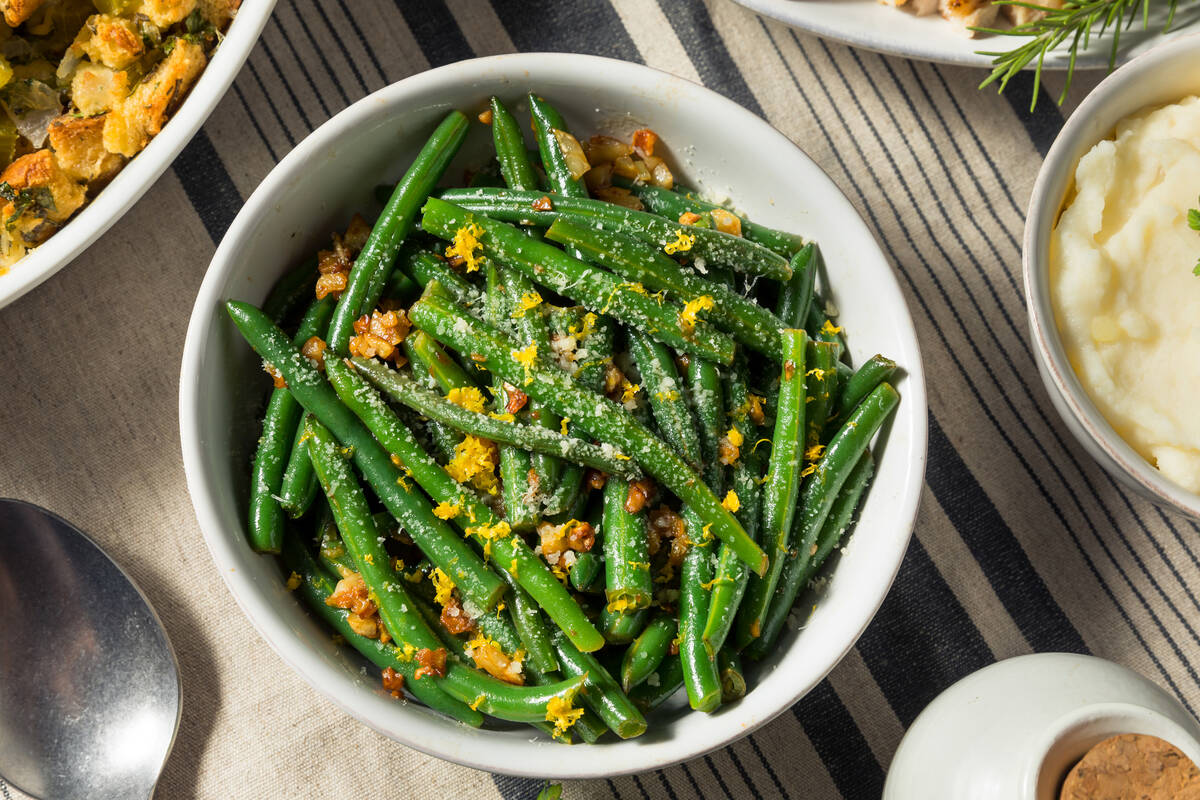This common veggie can lower cholesterol, improve heart health
As the new year sets in, many may be wondering what simple lifestyle changes they can make to improve their health and longevity. The good news is that incorporating a few easy changes into your diet can have a significant impact on overall well-being — and this includes heart health.
To learn more about how certain foods affect heart health, a team of scientists studied more than 1,000 foods and narrowed them down to the top 100 healthiest. They were scored based on their ability to meet, but not exceed, nutritional needs when eaten in combination with other foods.
As it turns out, there’s one common green veggie that makes the cut thanks to its nutrient profile and may help naturally reduce cholesterol levels and provide other heart health benefits.
Benefits of green beans
Green beans made the list of 100 healthiest foods — checking in at No. 73 — because their saponin content can help lower cholesterol levels.
Research suggests that foods high in saponin (a phytonutrient found in grains, pulses and green beans and peas) are beneficial because they may help lower cholesterol, have anti-cancer and anti-inflammatory properties and even help with blood glucose control.
Saponins help trap the “bad” cholesterol (low-density lipoprotein or LDL) and bile salts in the gut which prevent them from being absorbed. This leads to a decrease in LDL but does not impact the “good” cholesterol known as high-density lipoprotein or HDL. Because saponins help lower LDL levels, they may reduce the risk of heart disease.
Furthermore, green beans are low in sodium and fat and provide a good source of dietary fiber. One serving of green beans provides three grams of fiber. Soluble fiber helps bind cholesterol in the gut so it is excreted instead of absorbed into the body. Increasing soluble fiber intake by five grams per day is effective at significantly reducing total cholesterol and LDL levels.
It’s estimated that less than 1 in 10 adults consume the recommended amount of fiber. Women need approximately 25 grams of fiber daily and men should aim for closer to 38 grams per day, so eating more green beans can help you hit that number.
Green beans are also rich in folate and potassium which may help lower high blood pressure, which is the leading cause of death globally. A recent meta-analysis, combining research from 22 studies, concluded that diets rich in folate have a protective effect against hypertension as they reduce both systolic and diastolic blood pressures.
Potassium plays a role in blood pressure regulation as well by helping maintain proper electrolyte and fluid balance and promoting normal cell function. The American Heart Association suggests that increasing potassium in the diet might also help offset some of the harmful effects of high sodium, leading to improvements in blood pressure regulation. However, people with certain health conditions like kidney disease and diabetes may need to watch their potassium intake more closely and should consult with their health care provider before increasing potassium intake.
One serving of green beans provides approximately 10 percent of the recommended daily value of potassium.
Fresh, frozen or canned?
Choosing fresh or frozen fruits and vegetables helps maintain the highest vitamin, mineral and phytonutrient levels. In fact, frozen produce might provide a slight advantage because it’s packaged and preserved quickly after picking while fresh produce degrades slowly over time. Plus, it’s usually less expensive than the fresh stuff.
Different cooking methods such as canning, boiling, microwaving and air-frying can also impact nutrient content. However, nutrition content varies between which vegetables and cooking processes are being used.
Saponin content decreases significantly with boiling, air-frying and microwaving, while quick-cooking methods like blanching or steaming may help with vitamin and mineral preservation, especially of water-soluble vitamins like folate. When in doubt, cooking at lower temperatures for a shorter duration will probably help maintain the most nutrients.
That being said, it’s most important to buy and prepare green beans and other fruits and veggies in a way that will make you actually want to eat them. Cooking vitamin-rich foods in a variety of ways will help support your overall health.
Seven serving ideas
Need some quick and easy suggestions for incorporating more greens into your diet? Start with these:
■ Serve fresh green beans with a small side of your favorite dressing.
■ Stir them into a variety of soups and stews.
■ Add them to your next veggie stir-fry.
■ Chop them up and throw them into a salad.
■ Try tempura-battered green beans (baked or air-fried for a heart-healthy version).
■ Mix them into a comforting casserole.
■ Serve them steamed along with your favorite protein and starchy side.














